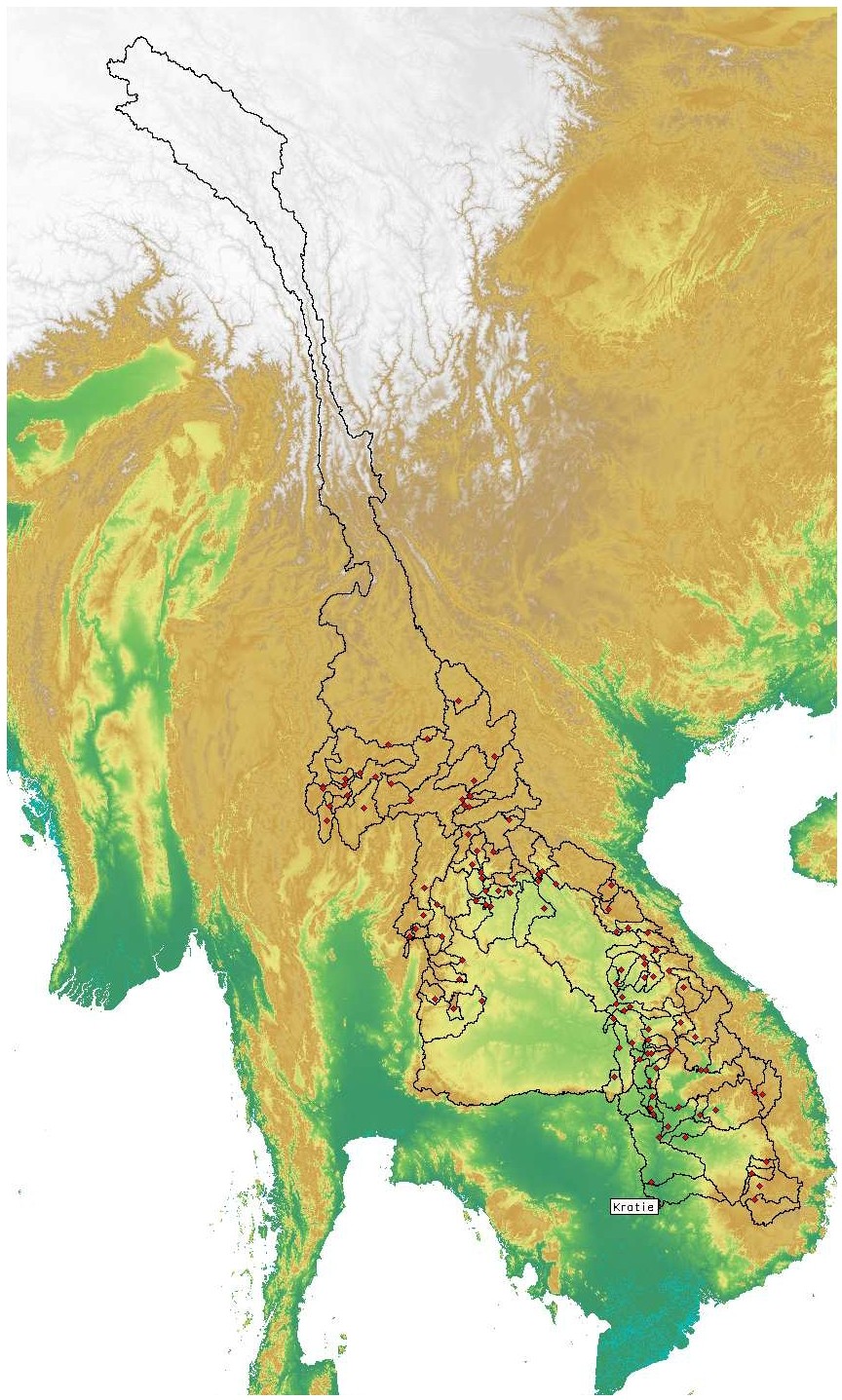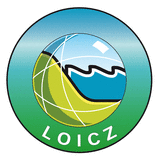Sediment dynamics in the Mekong Basin – model setup and calibration
The hydrological model SWIM (Krysanova et al., 1998) was set up to assess the discharge and sediment dynamics of the Mekong basin down to the gauging station in Kratie/Cambodia. The model is driven by ERA-INTERIM reanalysis data (Dee et al., 2011) and APHRODITE (Yatagai et al., 2009) precipitation data. The model calibration and validation is, at a first step, based on the discharge and sediment data provided by the Mekong River Commission (MRC) and a multi-objective calibration aiming at optimal model performance in the time and frequency domain. With respect to the heterogeneous (temporal and spatial) data availability, different parameter regions are defined (see Fig. 1). The calibrated model will be used to identify sensitive sediment source regions, as well as to estimate impacts of land use and climate changes on sediment yield in the basin.

Fig. 1: The Mekong basin with the gauging station of Kratie in the very south. The red marks show other discharge stations that have been used to define the parameter regions separated by the black solid lines.
References:
D. P. Dee et al.: The ERA-Interim reanalysis: configuration and performance of the data assimilation system. Quarterly Journal of the Royal Meteorological Society, 137(656):553–597, 2011.
V. Krysanova, D.-I. Mu, and A. Becker. Development and test of a spatially distributed hydrological / water quality model for mesoscale watersheds. Ecological Modelling, 106(2-3):261–289, 1998.
A. Yatagai et al.: A 44-year daily gridded precipitation dataset for Asia based on a dense network of rain gauges. Sola, 5:137–140, 2009.




